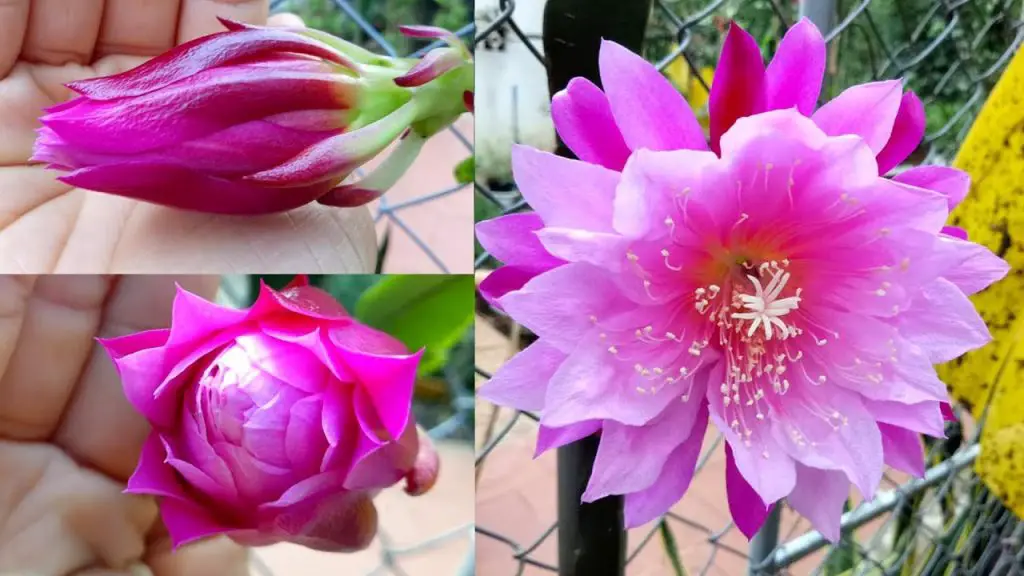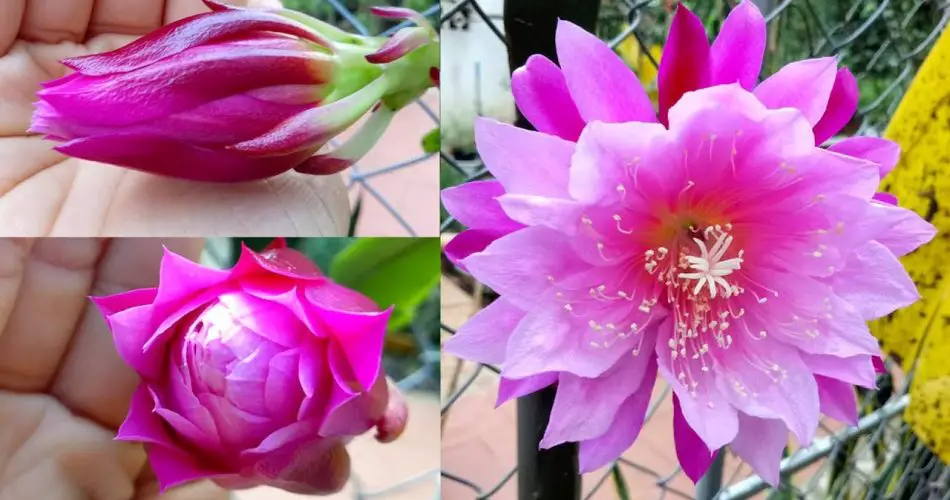The Night-Blooming Cereus, often referred to as the Queen of the Night, is one of the most fascinating plants you can grow in your garden or home. This unique cactus is not only known for its striking, fragrant blooms, but also for the mysterious and rare nature of its flowers, which bloom only at night. In this article, we explore why this plant is so special, how to care for it, and the enchanting beauty it brings to any space.
What is the Night-Blooming Cereus?

The Night-Blooming Cereus (scientific name: Selenicereus grandiflorus) is a species of cactus native to the Americas. It’s famous for its large, white flowers that open only during the night, often lasting just a few hours before they wither by dawn. The plant is sometimes referred to as the Queen of the Night due to the stunning spectacle it provides once a year when its blooms unveil under the moonlight.
The cereus cactus is a slow-growing plant that can live for many years, producing a single flower during its blooming season. The flower is large, with delicate white petals, and its fragrance is intoxicating, often likened to a sweet, floral perfume. The rare nature of its blooms has made it a symbol of beauty and mystery in various cultures.
Why is it Called the Queen of the Night?
The Queen of the Night has earned its regal title due to its breathtaking nocturnal blooms. Unlike many plants that flower during the day, the Night-Blooming Cereus only opens its flowers at night, typically in the late evening or early hours of the morning. The bloom’s beauty and fragrance are at their peak in the darkness, which adds an aura of mystique to its appearance.
The flowers of the Night-Blooming Cereus are short-lived, often wilting by dawn, which is why the plant is also known for being an ephemeral spectacle. Watching the flower bloom is considered a rare and magical event, with some plant enthusiasts even hosting midnight flower parties to celebrate its fleeting beauty.
Caring for the Queen of the Night
While the Night-Blooming Cereus is a low-maintenance plant, it does require some specific care to thrive and produce its stunning blooms. Here are some key tips for taking care of your Queen of the Night:
1. Light and Temperature
- The Night-Blooming Cereus thrives in bright, indirect light. While it can tolerate some direct sunlight, too much can cause damage to its leaves.
- Keep it in a warm environment with temperatures between 65°F and 85°F (18°C – 29°C). It doesn’t like the cold and should be kept away from drafts or frosty areas.
2. Watering
- Water the plant moderately—allow the soil to dry out between waterings. Over-watering can lead to root rot, so make sure the plant’s pot has good drainage.
- During the blooming period, you can water slightly more, but always check the soil’s moisture level before adding water.
3. Soil
- The Night-Blooming Cereus prefers well-draining cactus soil. You can use a mix designed for cacti or make your own by combining sand, peat, and perlite.
- Ensure the plant is in a pot with drainage holes to prevent water from accumulating at the bottom.
4. Fertilizing
- Feed the plant with a balanced liquid fertilizer every month during the growing season (spring and summer). Reduce feeding in the fall and winter when the plant is not actively growing.
5. Support for Growth
- The Night-Blooming Cereus has long, sprawling stems, so it may need a support structure like a trellis or stake to help it grow upright.
- As it grows, you can gently prune the stems to keep it in shape and encourage branching.
When Does the Queen of the Night Bloom?
The Night-Blooming Cereus typically blooms during the summer months, with its flowers opening in the late evening and closing by the next morning. However, exact bloom times can vary depending on the plant’s age and care. In general, it takes a few years for a Night-Blooming Cereus to bloom, but once it does, the event is well worth the wait.
Some plants bloom only once a year, while others might bloom several times in one season. Temperature changes and environmental factors also play a significant role in determining when the plant will flower.
Why Grow the Queen of the Night?
Apart from its unique and captivating blooms, the Night-Blooming Cereus can make an excellent addition to any indoor garden or outdoor space. Here are some reasons why you might want to consider growing this extraordinary plant:
- Aromatic Delight: The fragrant flowers will fill your home or garden with a lovely scent that is both calming and intoxicating.
- Exotic Appeal: The rarity of the blooms adds an exotic touch to any collection of plants. It’s a conversation starter and a showstopper.
- Low-Maintenance: While the plant may be a little finicky about temperature, it’s otherwise quite easy to care for, making it a great choice for beginner gardeners.
- Symbol of Beauty: The Queen of the Night symbolizes ephemeral beauty and fleeting moments, making it a lovely reminder to appreciate life’s temporary pleasures.
Conclusion
The Night-Blooming Cereus is truly deserving of its title as the Queen of the Night. Its rare, fragrant blooms that open only at night make it a magical addition to any home or garden. With proper care and patience, you can enjoy this mysterious and beautiful plant year after year, watching in awe as it unveils its stunning flowers under the moonlit sky. If you’ve never seen a Night-Blooming Cereus in full bloom, it’s an experience you won’t want to miss. 🌙🌸



